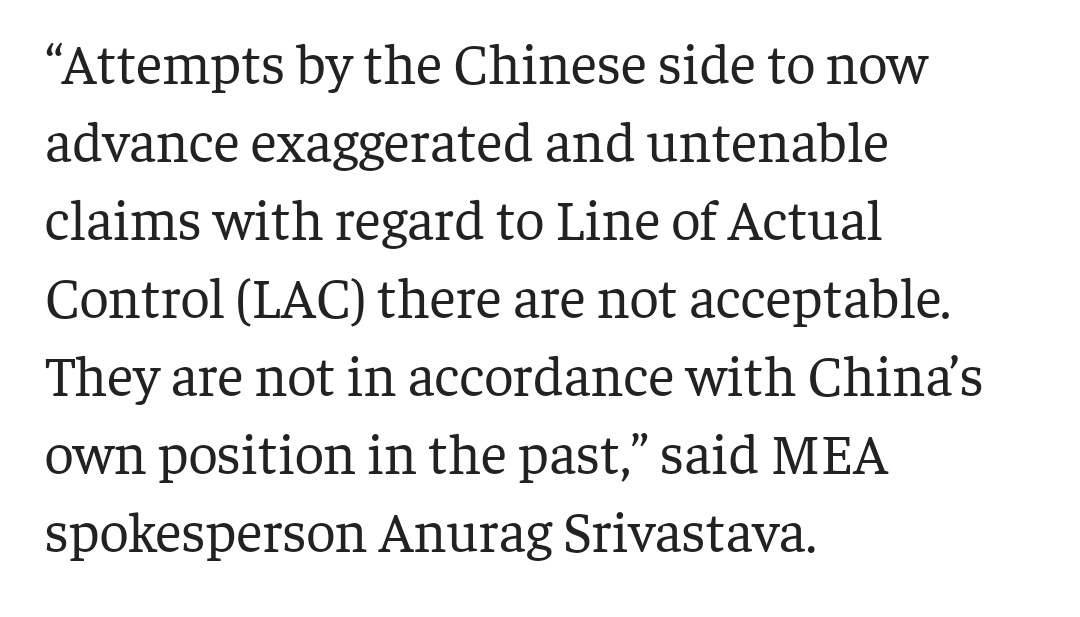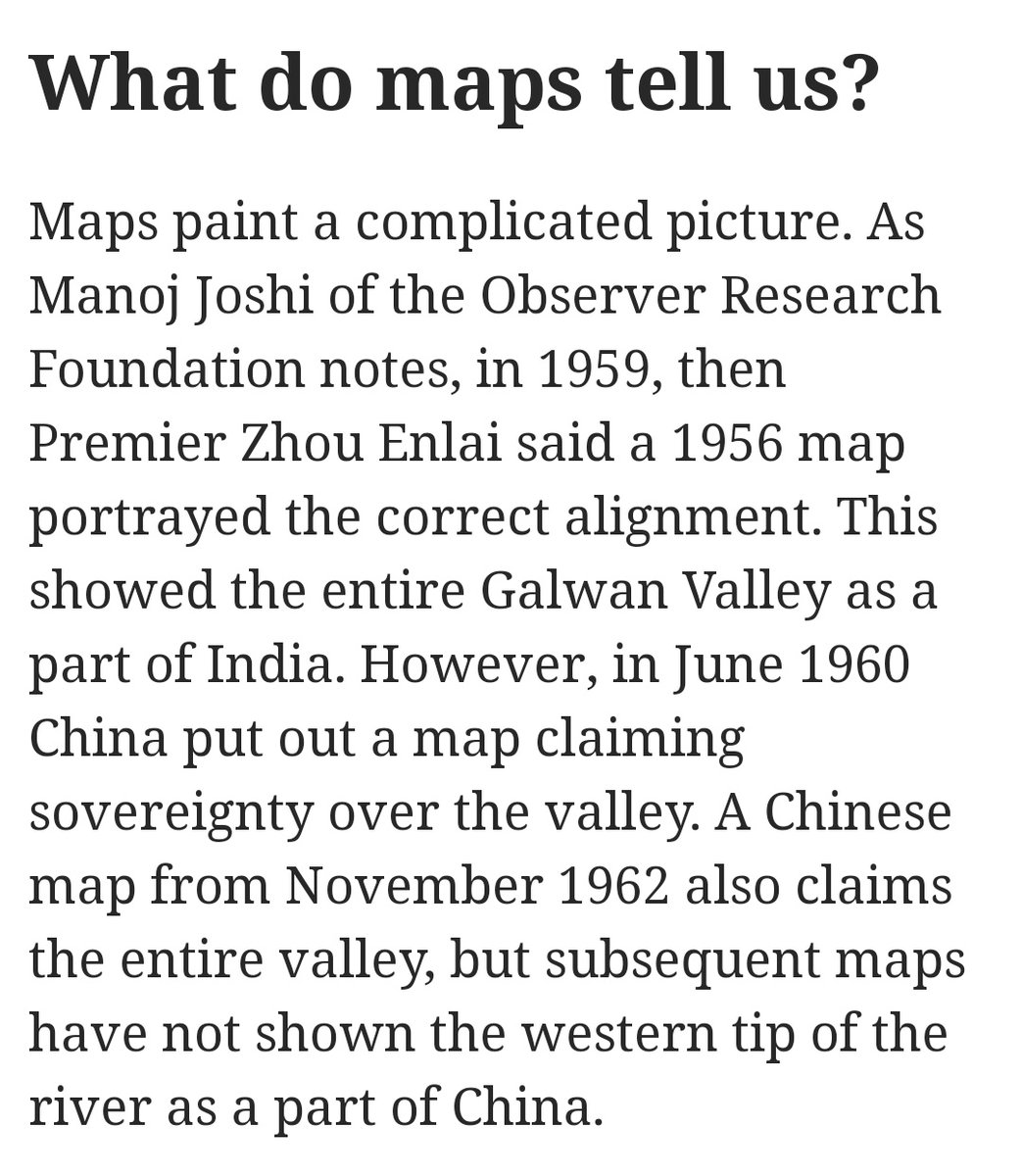The common-sense solution for the border dispute is simple: Convert status-quo borders into the international boundary.
Each side keeps what it controls: India recognizes Chinese claims in the western sector (Aksai Chin), China recognizes Indian claims in the eastern sector (AP)
Each side keeps what it controls: India recognizes Chinese claims in the western sector (Aksai Chin), China recognizes Indian claims in the eastern sector (AP)
This is simply recognizing ground realities. No change on the ground would be required, and settled populations wouldn& #39;t be affected; India would keep the populated land of AP, while China would get the barren Aksai Chin.
India would "get" ~70% of the total disputed territory.
India would "get" ~70% of the total disputed territory.
China offered *exactly* this deal to India for decades - from the 60s to the 80s, multiple times, only to be refused each time.
(They say it was implicitly offered using ambiguous language, yet, India could& #39;ve always asked for a clarification)
http://indiaschinablog.blogspot.com/2010/03/you-scratch-my-back-but-i-wont-scratch.html">https://indiaschinablog.blogspot.com/2010/03/y...
(They say it was implicitly offered using ambiguous language, yet, India could& #39;ve always asked for a clarification)
http://indiaschinablog.blogspot.com/2010/03/you-scratch-my-back-but-i-wont-scratch.html">https://indiaschinablog.blogspot.com/2010/03/y...
India wishes to negotiate/settle both sectors separately. Yet, even with this approach, there& #39;s no evidence that India is willing to compromise.
While China was willing to keep only 30% of the total disputed territory, India wants 100%.
For India - it& #39;s all or nothing.
While China was willing to keep only 30% of the total disputed territory, India wants 100%.
For India - it& #39;s all or nothing.
China has indicated that if both sectors are to be negotiated separately, China will expect some concessions in both of them. Hence the increased focus on Tawang by China in recent years.
And the earlier swap deal is today off the table. The new status quo seems to be...
And the earlier swap deal is today off the table. The new status quo seems to be...
India is less interested in settling the border and more interested in settling the status quo: Border management instead of border resolution.
Hence the focus on demarcating the LAC - until the dispute is resolved (which India apparently wishes to do with zero compromise).
Hence the focus on demarcating the LAC - until the dispute is resolved (which India apparently wishes to do with zero compromise).
China, somewhat surprisingly, is less interested in demarcating the LAC in the western sector. It believes that the ultimate resolution should be political, not technical - a vast difference with India.
https://warontherocks.com/2020/06/chinas-strategic-assessment-of-the-ladakh-clash/
And">https://warontherocks.com/2020/06/c... that is where we stand today.
https://warontherocks.com/2020/06/chinas-strategic-assessment-of-the-ladakh-clash/
And">https://warontherocks.com/2020/06/c... that is where we stand today.
Unsurprisingly, Indian diplomats - both current and retired (including the Indian EAM himself) - themselves ponder whether it would& #39;ve been better for Nehru to have accepted Zhou& #39;s package deal.
https://mea.gov.in/Speeches-Statements.htm?dtl/32038/External+Affairs+Ministers+speech+at+the+4th+Ramnath+Goenka+Lecture+2019
https://mea.gov.in/Speeches-... href=" https://twitter.com/NMenonRao/status/1263161224105095168?s=19">https://twitter.com/NMenonRao...
https://mea.gov.in/Speeches-Statements.htm?dtl/32038/External+Affairs+Ministers+speech+at+the+4th+Ramnath+Goenka+Lecture+2019
Of course, neither nation has exactly covered itself in glory in the dispute.
China& #39;s claim line in the Galwan Valley (site of current clashes) has kept changing. It& #39;s 1956 map was different from that of 1960. Then it kept mum about the area for decades.
https://www.thehindu.com/news/national/the-hindu-explains-who-does-galwan-valley-belong-to/article31879418.ece">https://www.thehindu.com/news/nati...
China& #39;s claim line in the Galwan Valley (site of current clashes) has kept changing. It& #39;s 1956 map was different from that of 1960. Then it kept mum about the area for decades.
https://www.thehindu.com/news/national/the-hindu-explains-who-does-galwan-valley-belong-to/article31879418.ece">https://www.thehindu.com/news/nati...

 Read on Twitter
Read on Twitter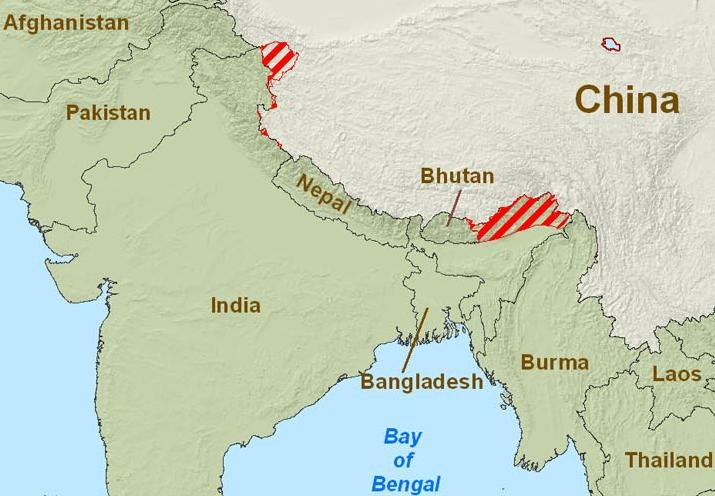
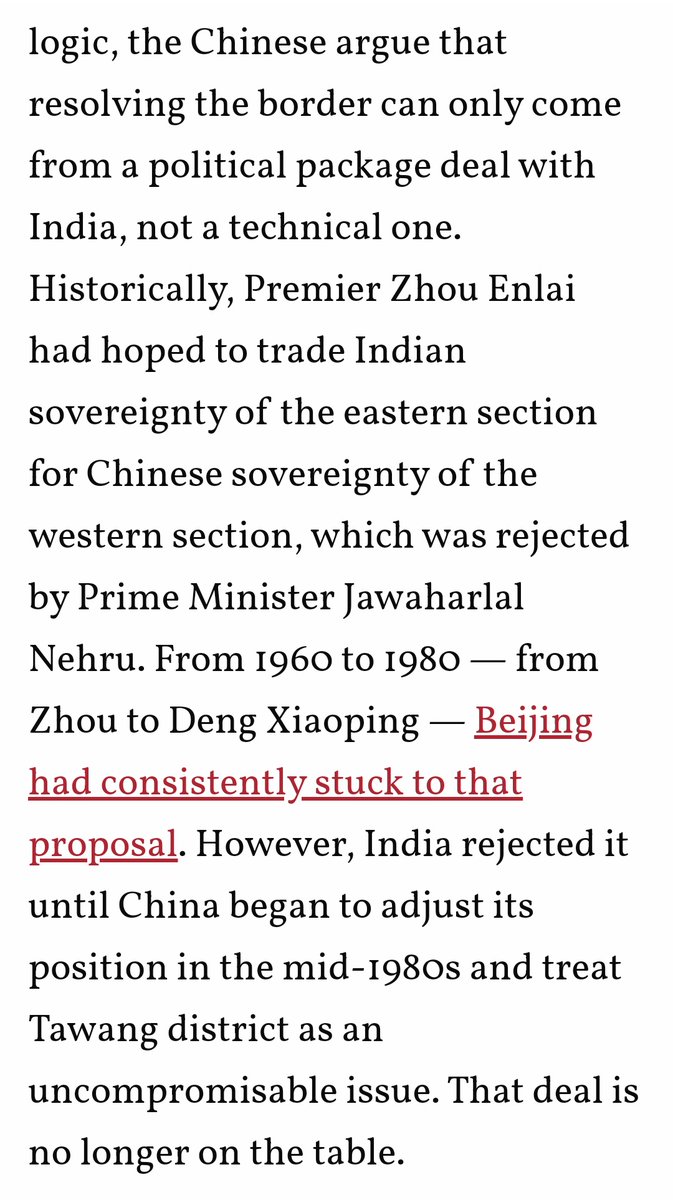
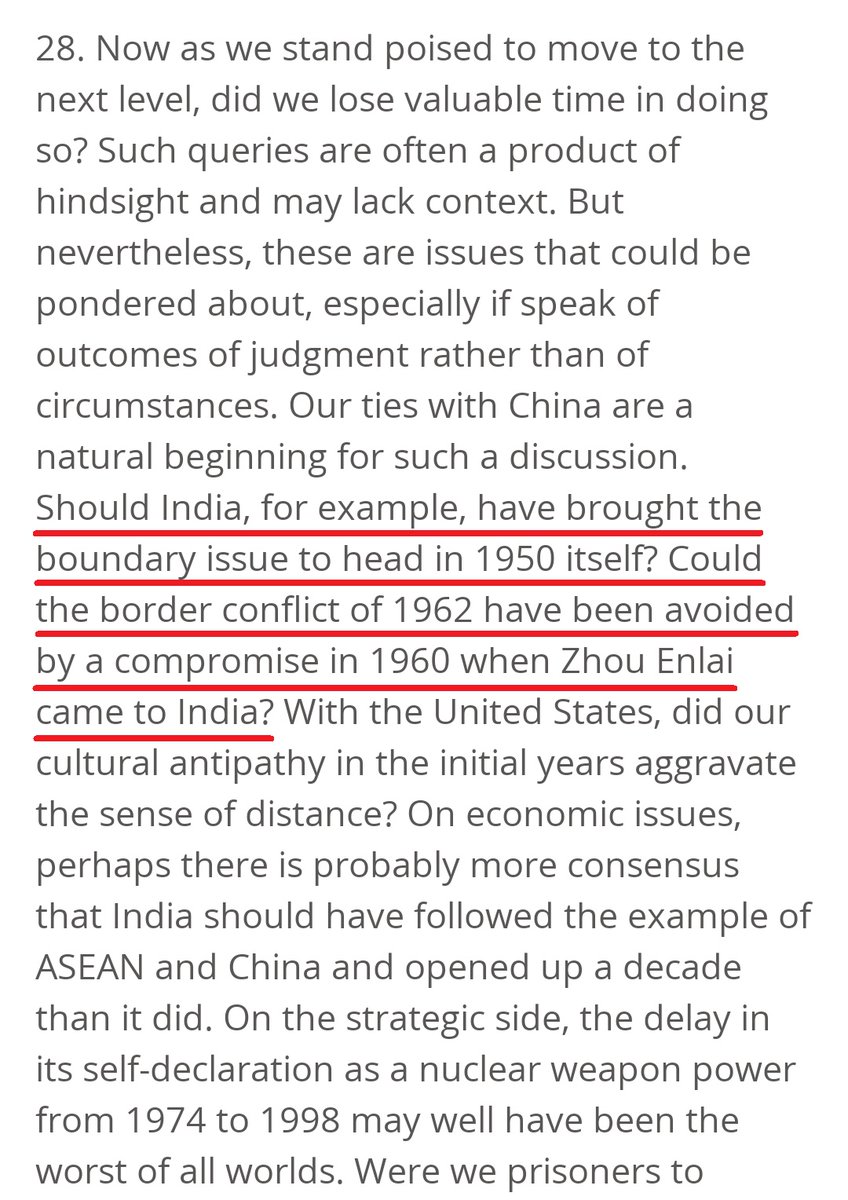 https://twitter.com/NMenonRao..." title="Unsurprisingly, Indian diplomats - both current and retired (including the Indian EAM himself) - themselves ponder whether it would& #39;ve been better for Nehru to have accepted Zhou& #39;s package deal. https://mea.gov.in/Speeches-... href=" https://twitter.com/NMenonRao/status/1263161224105095168?s=19">https://twitter.com/NMenonRao...">
https://twitter.com/NMenonRao..." title="Unsurprisingly, Indian diplomats - both current and retired (including the Indian EAM himself) - themselves ponder whether it would& #39;ve been better for Nehru to have accepted Zhou& #39;s package deal. https://mea.gov.in/Speeches-... href=" https://twitter.com/NMenonRao/status/1263161224105095168?s=19">https://twitter.com/NMenonRao...">
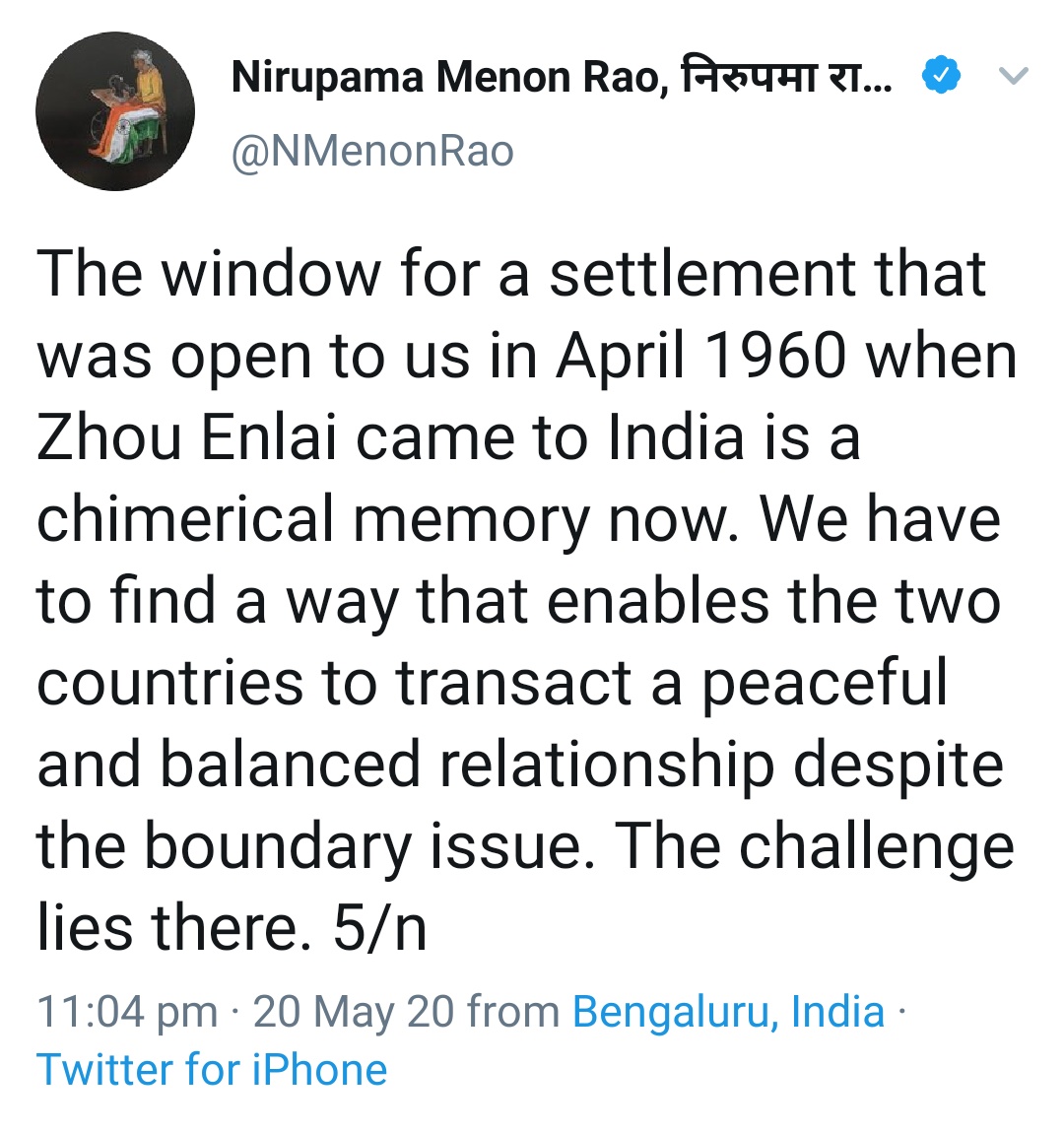 https://twitter.com/NMenonRao..." title="Unsurprisingly, Indian diplomats - both current and retired (including the Indian EAM himself) - themselves ponder whether it would& #39;ve been better for Nehru to have accepted Zhou& #39;s package deal. https://mea.gov.in/Speeches-... href=" https://twitter.com/NMenonRao/status/1263161224105095168?s=19">https://twitter.com/NMenonRao...">
https://twitter.com/NMenonRao..." title="Unsurprisingly, Indian diplomats - both current and retired (including the Indian EAM himself) - themselves ponder whether it would& #39;ve been better for Nehru to have accepted Zhou& #39;s package deal. https://mea.gov.in/Speeches-... href=" https://twitter.com/NMenonRao/status/1263161224105095168?s=19">https://twitter.com/NMenonRao...">
